Art & Exhibitions
The British Pre-Raphaelites Meet the Italian Renaissance at This New Exhibition
The monumental exhibition traces the influence on English artists of their Italian forebears.
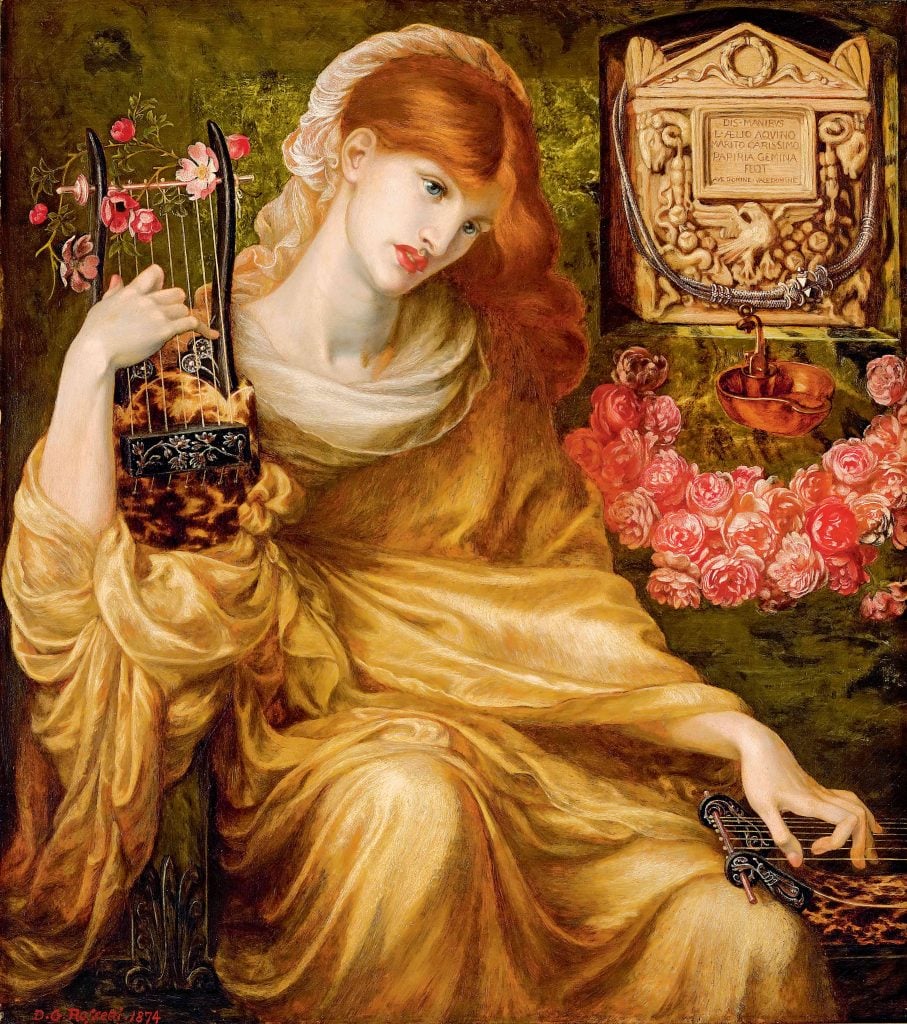
The San Domenico Museum in Forlì, Italy, is hosting a monumental exhibition, “Pre-Raphaelites: Modern Renaissance.” The show brings together 360 works of art, borrowed from major European, American, and British museums, as well as private collections, foregrounding Italian masterpieces spanning from Cimabue to Veronese. The first multi-disciplinary exhibition of its kind in Italy, the show delves into the profound influence of Italian Renaissance art on the British Pre-Raphaelite movement of the mid-19th to early 20th centuries.
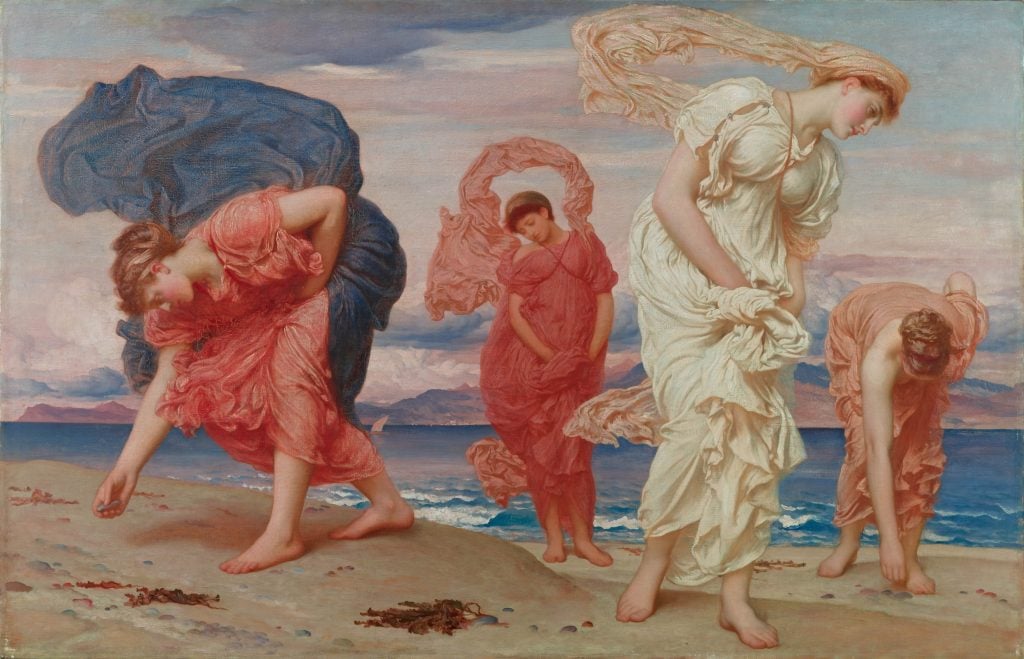
Frederic Leighton, Greek Girls Picking up Pebbles by the Sea (1871). Collection Pérez Simón, Mexico.
“Never before has there been an opportunity to put so many British works from this period in conversation with the Italian forerunners,” said Peter Trippi, a co-curator of the show. This is largely because borrowing Italian Renaissance and medieval art out of Italy is incredibly complicated due to the expense as well as the fragility and rarity of the works, which are typically cherished by the churches and museums in which they reside.
Among the highlights are celebrated works by Italian masters such as Cimabue, Botticelli, Michelangelo, and Titian, juxtaposed with major pieces by renowned British artists including Dante Gabriel Rossetti, John Everett Millais, Edward Burne-Jones, and William Morris. Notably, the exhibition spotlights often overlooked contributions of women artists like Evelyn De Morgan, Elizabeth Siddal, and Julia Margaret Cameron to the Pre-Raphaelite movement.
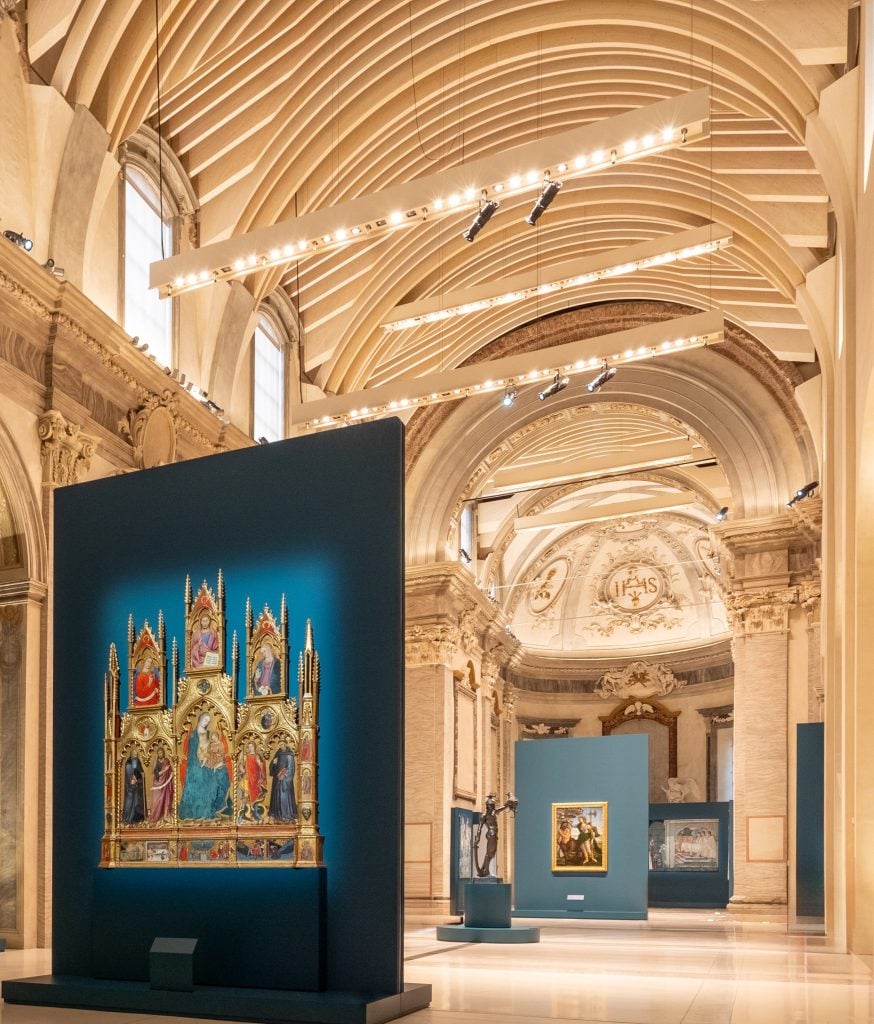
The installation was designed by Lucchi & Biserni. Photo: Emanuele Rambaldi.
Structured as a captivating visual dialogue across time, the exhibition traces three generations of Pre-Raphaelites, a group founded in 1848 with the the mission to rejuvenate British art during the industrial age. Determined to recapture the spirit of medieval and Renaissance Italian artists who worked before the death of Raphael in 1520, Pre-Raphaelites rejected the academic conventions of their time by re-envisioning styles and themes from the past in strikingly modern ways. They drew on a dynamic array of Italian precedents, embracing Venetian Gothic architecture, the “Primitive” paintings at London’s National Gallery, and the sophisticated sensuality of artists like Veronese and Titian.
The installation, designed by Lucchi & Biserni of Forlì, showcases an array of works by prominent Pre-Raphaelite artists such as Burne-Jones, Frederic Leighton, and John Ruskin. More than 50 design objects, including four tremendous Holy Grail tapestries by Morris & Co. and a grand piano adorned by Burne-Jones, enrich the display. Additionally, the exhibition features bronzes by leaders of the “New Sculpture” movement and proto-Decadent works by Charles Ricketts and Aubrey Beardsley.
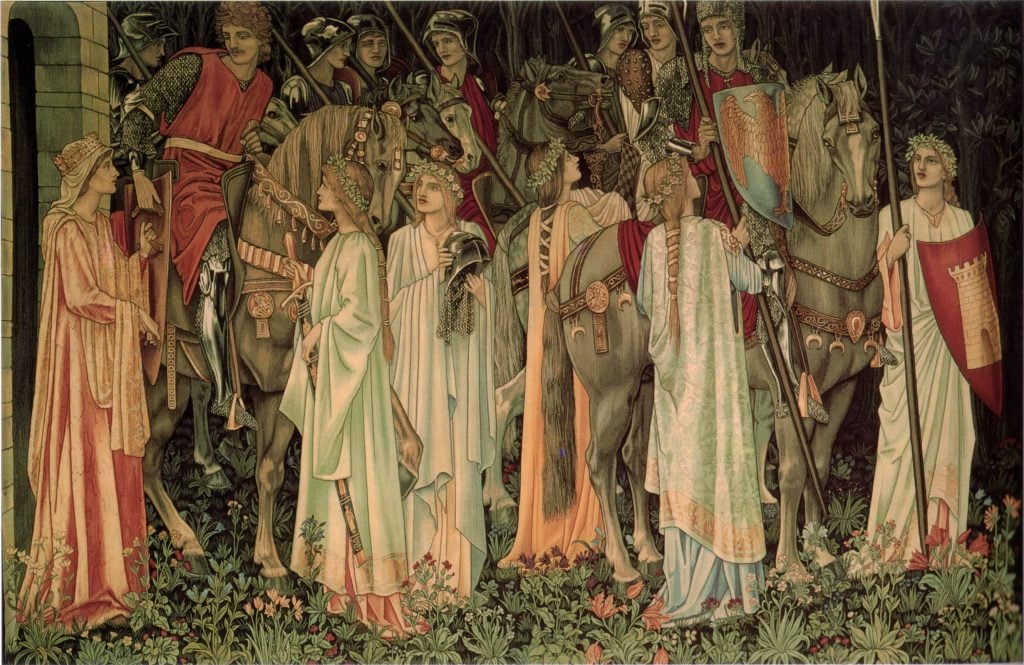
Edward Burne-Jones, William Morris, and John Henry Dearle (designers), Holy Grail Tapestries: The Arming of the Knights (1890). Private collection.
Trippi describes the exhibition’s display of Burne-Jones’ work, set in the church’s dining room, as “magical.”
“You look up and see a gorgeous medieval painting of flowers and leaves on the church’s ceiling, and you look down ahead of you and see Burne-Jones’ 19th-century paintings of flowers and leaves,” he said. On one wall of the room, a painting by Mantegna and another by Bellini are on display. In a vitrine, a drawing by Michelangelo can be found. Between all these works, the Burne-Jones Pre-Raphaelite paintings hang, in flirtation with the works of the old Italian masters. “It’s a love affair, really,” he says.
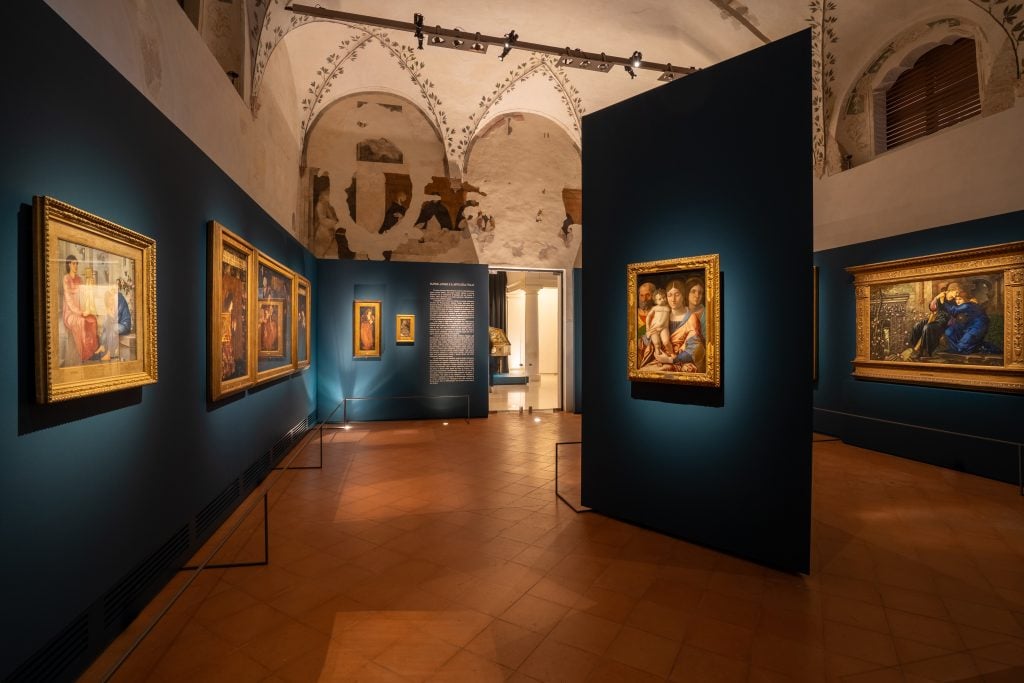
A view of the Edward Burne-Jones room, described by co-curator Peter Trippi as “a love affair.” Photo: Emanuele Rambaldi
The grand finale of the exhibition offers a fresh perspective on the Pre-Raphaelite legacy through 19th- and early 20th-century paintings by Italian artists including Adolfo de Carolis, Giovanni Costa, Giulio Aristide Sartorio, and Filadelfo Simi.
“Pre-Raphaelites: Modern Renaissance” is organized by the Fondazione Cassa dei Risparmi di Forlì in collaboration with the Municipality of Forlì. The Italian catalogue is published by Dario Cimorelli Editore (Milan).
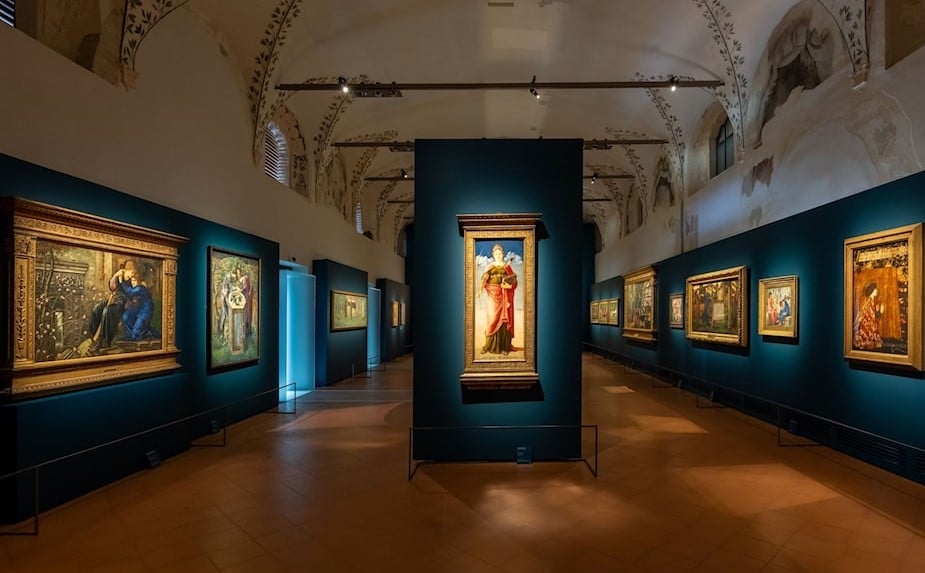
A view of the “Pre-Raphaelites: Modern Renaissance” exhibition at the Museo Civico San Domenico in Italy. photo: Emanuele Rambaldi.
“Pre-Raphaelites: Modern Renaissance” is on view at the San Domenico Museum in Forlì, Italy, through June 30, 2024.





